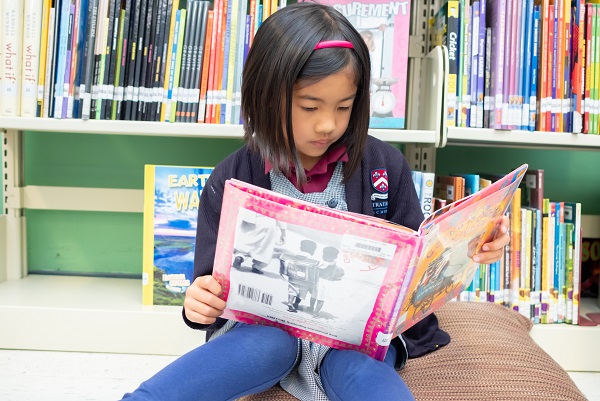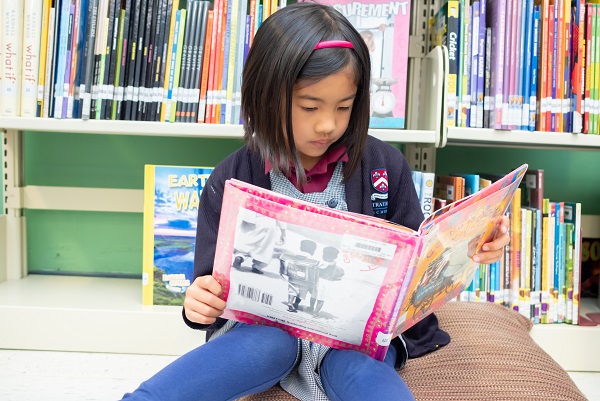
This April marks the 25th anniversary of the celebration of National Poetry Month, a commemoration launched by poetry scholars to highlight the legacy and ongoing achievement of poets and to encourage the reading and appreciation of poems. The concept was embraced by teachers who were eager to bring poetry into their classrooms and promote it as a fun extracurricular activity, which led to the growth of regional and national poetry festivals and competitions, including Poetry Out Loud.
Why encourage children to read and write poetry? What is uniquely valuable and rewarding about the artform? From the volumes that have been written about those questions, we offer three ideas:
First, memorization is a foundational skill that still needs to be nurtured. Poetry, with its short form, rhythms, and repetition (beginning with nursery rhymes) lends itself to easy memorization and is a pleasurable way to build a skill. Chances are that literary passages you remember from your own childhood are lines of poetry.
Second, for the reluctant reader and writer, poetry can be a welcoming gateway. Collections of poetry are great for road trips when children can be encouraged to read aloud from the back seat. Similarly, a reluctant writer facing a blank writing journal or spiral notepad can feel overwhelmed. Yet, committing four lines of poetry to paper can seem quite doable. With a bit of instruction, some prompts, and a few three by five-inch index cards, children will compose their own rhyming quatrains and be justifiably proud of them.
Finally, writing poetry advances a critically important skill and that is “choosing one’s words carefully.” The very nature of the artform, with its emphasis on sound and imagery, on meter and rhyme, encourages the poet to play with words. Every good poem, whether traditional or free verse, is language that has been carefully shaped and well made—and that is a critical thinking skill worth cultivating!
We really enjoyed creating this month’s poetry book selections, as it reconnected us with some old favorites while selecting from among several newer anthologies. With a nod to Earth Day (April 22nd), we intentionally included poetry that celebrated nature, wilderness, our Earth. Our wish for you and your children is that, in your exploration of poetry this month, you will discover a poem that becomes a friend—a poem you return to many times in the future because you enjoy its good company.
Grades Kindergarten to Second
When Green Becomes Tomatoes: Poems for All Seasons written by Julie Fogliano illustrated by Julie Morstad
These 48 quietly conversational poems include moments of lively energy—wind on a hilltop or the jubilant dizziness of a summer meadow. Morstad’s charming gouache-and-pencil-crayon art is well-matched to the delicacy of the poetry. An adorable young girl with straight black hair and brown skin appears alone or with friends throughout; readers may identify her as the voice in many of the poems. The poetry is both child-friendly and introspective, for example, a poem titled, July 28 – “if you ever stopped / to taste a blueberry / you would know / that it’s not really about the blue, at all.”
Forest Has a Song: Poems written by Amy Ludwig VanDerwater, illustrated by Robbin Gourley
Calling all aspiring naturalists! This is a collection of 26 short, lighthearted poems about the forest and its animals, plants, and seasonal changes, beautifully illustrated in watercolor. VanDerwater has taken seemingly ordinary things like a rotten log and shown readers just what occurs within, such as being a home to a host of different animals. Readers will discover things within a forest that they have never stopped to notice before now.
Grades 3-4
I’m Just No Good at Rhyming and Other Nonsense for Mischievous Kids and Immature Grown-Ups written by Chris Harris, illustrated by Lane Smith
This book will make you giggle and may even teach you a lesson or two. The author molds wit and wordplay, nonsense and oxymoron, and visual and verbal sleight-of-hand in masterful ways that make us look at the world in a whole new wonderfully upside-down way. There is a dazzling variety of poetry forms and subjects, which will keep readers engaged and on their toes.
The Weather Girls written and illustrated by Aki
Summer, Fall, Winter, or Spring—the Weather Girls are ready for whatever the seasons might bring! Through the seasons, readers see them enjoying the outdoors: diving and splashing, building snowmen, hiking mountains, picking apples, or skipping in a field. Get inspired and get active with this stylish book all about the magic of the seasons, the wonders of the outside world, and the fun you can have with good friends—it’s the perfect picture book for sharing!
Grades 5-8
Thanku: Poems of Gratitude edited by Miranda Paul illustrated by Marlena Myle
This themed collection of poems explore gratitude in traditional forms and in whimsical ways—for example, the sweatshirt that is grateful for a chance to be worn and appreciated. The book contains diverse perspectives and many of the poems express gratitude and thankfulness for little things that someone might not consider such as: nature, the sky, spiders, sleep, or helping others. Each poem is accompanied by a bright and inviting illustration and includes an explanation of the variety of poetry formats featured.
Mother Earth Father Sky: Poems of Our Planet selected by Jane Yolen, illustrated by Jennifer Hewitson
This anthology is an eclectic collection of verses concerning the beauty, the destruction, and the conservation of the earth. Divided into three sections—Celebrate the Earth, Sacrifice the Earth, Save the Earth—these poems are perfect for Earth Day, and any other day of the year. Award-winning author Jane Yolen has collected poems of C.S. Lewis, Ogden Nash, Christina Rossetti, Carl Sandburg, and other contemporary poets who have paid tribute to our beautiful earth. These thirty-five voices cry with joy, grief, and hope for our “Mother Earth” and our “Father the Sky.”
